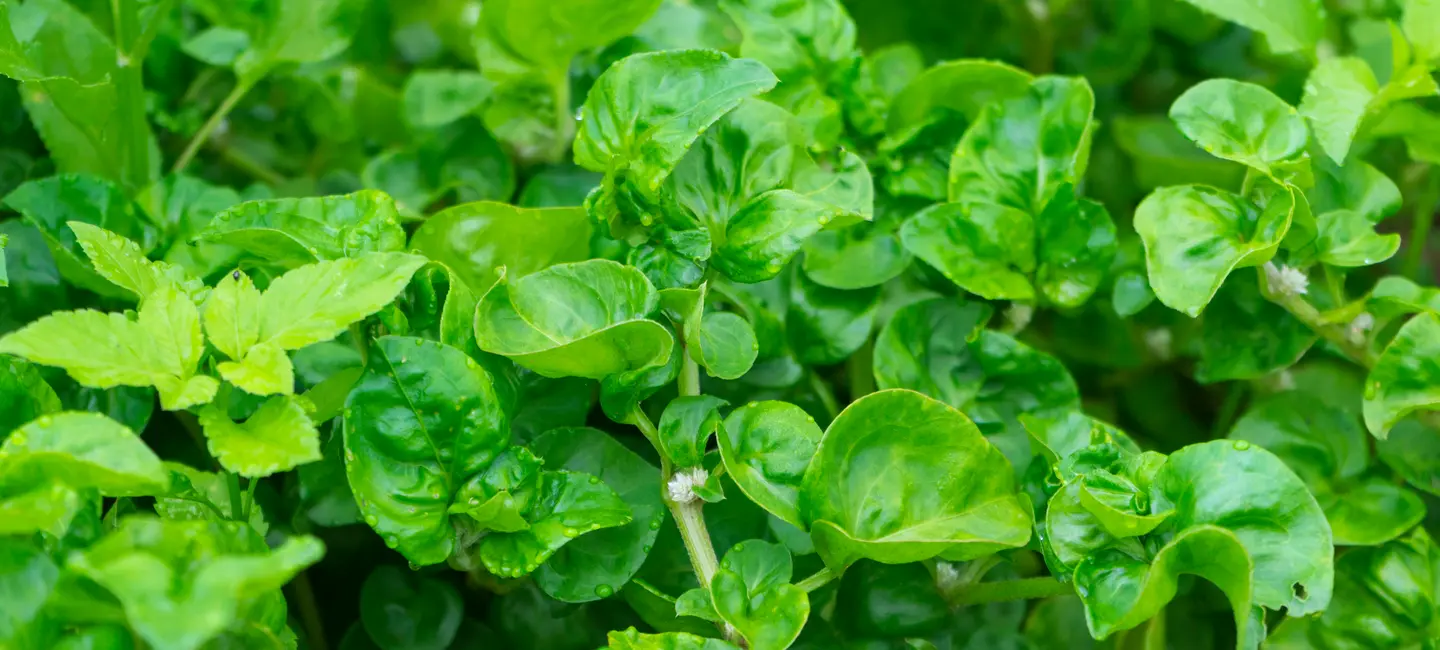
Watercress is a plant. The parts that grow above the ground are used to make medicine.
Watercress is used for short-term swelling (inflammation) of the airways in the lungs (acute bronchitis), flu, arthritis, baldness, constipation, sexual arousal, and many other conditions, but there's no good scientific evidence to support these uses.
In foods, watercress is widely used in leaf salads and as a culinary spice.
Is It Effective?
NatMed Pro rates effectiveness based on scientific evidence according to the following scale: Effective, Likely Effective, Possibly Effective, Possibly Ineffective, Likely Ineffective, Ineffective, and Insufficient Evidence to Rate.
- Arthritis.
- Constipation.
- Coughs.
- Earaches.
- Eczema (atopic dermatitis).
- Flu.
- Hair loss.
- Itchy skin infection caused by mites (scabies).
- Short-term swelling (inflammation) of the airways in the lungs (acute bronchitis).
- Warts.
- Other conditions.
More evidence is needed to rate the effectiveness of watercress for these uses.
Is it Safe?
Watercress may block some cancer-causing chemicals (carcinogens). It can also increase the amount of urine produced by the body (diuretic).
When taken by mouth: Watercress is LIKELY SAFE in the amounts found in food. Watercress is POSSIBLY SAFE when taken by mouth in amounts used in medicine, short-term. When it is used long-term or in very large amounts, watercress is POSSIBLY UNSAFE and can cause damage to the stomach.
Special Precautions & Warnings:
Pregnancy and breast-feeding: Watercress is LIKELY UNSAFE when used in medicinal amounts during pregnancy. It might start menstruation and cause a miscarriage. It's best to avoid use. There isn't enough reliable information to know if watercress is safe to use when breast-feeding. Stay on the safe side and avoid use.
Children: Watercress is LIKELY UNSAFE for use as a medicine in children, especially in those younger than four years old.
Stomach or intestinal ulcers: Don't use watercress if you have stomach or intestinal ulcers.
Kidney disease: Don't use watercress if you have kidney disease.
Chlorzoxazone (Parafon Forte, Paraflex)
Interaction Rating=Moderate Be cautious with this combination.
The body breaks down chlorzoxazone to get rid of it. Watercress might decrease how quickly the body breaks down chlorzoxazone. Taking watercress along with chlorzoxazone might increase the effects and side effects of chlorzoxazone.
Lithium
Interaction Rating=Moderate Be cautious with this combination.
Watercress might have an effect like a water pill or "diuretic." Taking watercress might decrease how well the body gets rid of lithium. This could increase how much lithium is in the body and result in serious side effects. Talk with your healthcare provider before using this product if you are taking lithium. Your lithium dose might need to be changed.
Warfarin (Coumadin)
Interaction Rating=Moderate Be cautious with this combination.
Watercress contains large amounts of vitamin K. Vitamin K is used by the body to help blood clot. Warfarin (Coumadin) is used to slow blood clotting. By helping the blood clot, watercress might decrease the effectiveness of warfarin (Coumadin). Be sure to have your blood checked regularly. The dose of your warfarin (Coumadin) might need to be changed.
There are no known interactions with herbs and supplements.
There are no known interactions with foods.
The appropriate dose of watercress depends on several factors such as the user's age, health, and several other conditions. At this time there is not enough scientific information to determine an appropriate range of doses for watercress. Keep in mind that natural products are not always necessarily safe and dosages can be important. Be sure to follow relevant directions on product labels and consult your pharmacist or physician or other healthcare professional before using.
Agriao, Berro, Berro di Agua, Berros, Brunnenkresse, Crescione di Fonte, Cresson, Cresson au Poulet, Cresson d'eau, Cresson de Fontaine, Cresson de Ruisseau, Cresson Officinal, Indian Cress, Jal-Halim, Mizu-Garashi, Nasilord, Nasturtii Herba, Nasturtium officinale, Oranda-Garashi, Radicula nasturtium, Rorippa nasturtium, Scurvy Grass, Sisymbrium nasturtium, Selada-Air, Tall Nasturtium, Wasserkresse, Waterkres.
Information on this website is for informational use only and is not intended to replace professional medical advice, diagnosis, or treatment. While evidence-based, it is not guaranteed to be error-free and is not intended to meet any particular user’s needs or requirements or to cover all possible uses, safety concerns, interactions, outcomes, or adverse effects. Always check with your doctor or other medical professional before making healthcare decisions (including taking any medication) and do not delay or disregard seeking medical advice or treatment based on any information displayed on this website.
© TRC Healthcare 2024. All rights reserved. Use and/or distribution is permitted only pursuant to a valid license or other permission from TRC Healthcare.
